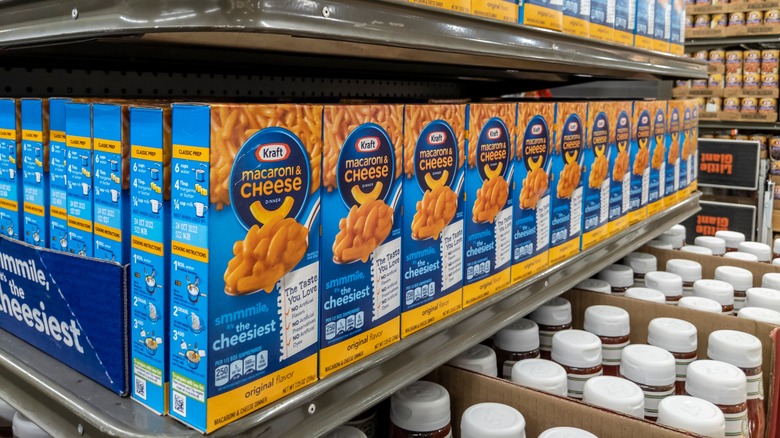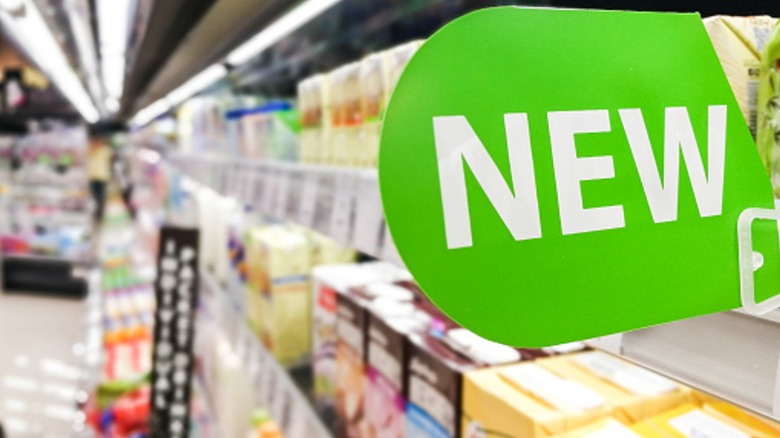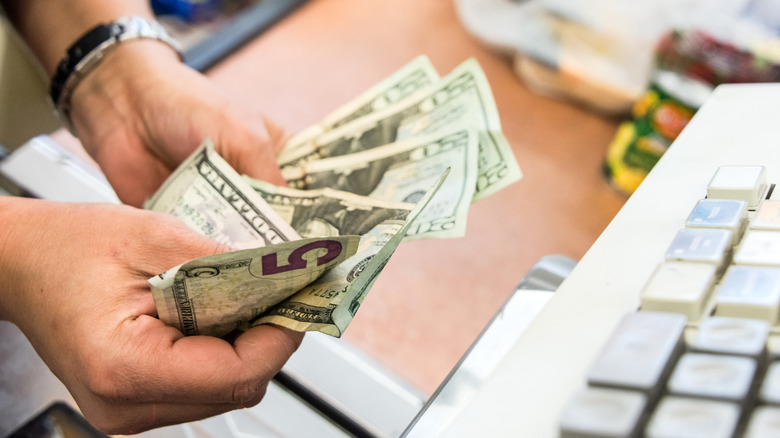How To Spot Grocery Store 'End Caps' And Find The Better Deal
Regardless of which grocery store you shop at, knowing the most common marketing strategies can help you avoid falling for them, ultimately saving you money. For instance, stores regularly rearrange their layouts to force customers to wander up and down aisles (increasing the odds of impulse purchases) as they search for a specific product. Another sneaky tactic stores use is placing certain items on end cap displays, or the ends of aisles, rather than within the aisles themselves.
As you might expect, end cap displays catch shoppers' attention, making them wonder what's so special about these particular products that they have been singled out. In many cases, shoppers automatically assume that such placement means the product is on sale, or is otherwise a great deal. However, this is frequently not the case; stores often want you to believe end caps are for deals to encourage an impulse purchase.
Instead of grabbing items from end caps, a good rule of thumb is to check the aisle where those products are usually sold. You might actually find a better deal on a similar item manufactured by a different brand. Now, that's some smart shopping.
New end caps don't always mean new products
Stores also use end caps to highlight new products that might otherwise go relatively unnoticed if placed in a regular aisle. However, not every product displayed on an end cap is necessarily new. Instead, the store could have taken a high profit margin item from mid-aisle (a point we'll come back to later) in hopes that customers will mistake it for something new and exciting. To keep shoppers interested, stores frequently rotate products through end cap displays every couple of weeks.
However, as shoppers, we don't have to fall for this tactic. Of course, we can't possibly know every item in the store, but we can keep an eye out for whether the packaging or display actually indicates it's new. In the absence of such labeling, it's likely that the product has been pulled from one of the many sneakily long grocery aisles to capture more interest. Again, always be sure to check mid-aisle for other, more cost-effective options.
End caps make grocery stores a lot of money
Grocery stores strategically place specific items in end cap displays for optimal results (in other words, to earn the most money). Most obviously, stores will typically use end caps for high profit margin items like bulk foods, cereal, and frozen desserts. The combination of end caps receiving the most traffic and high profit margin items bringing in more revenue means that this pairing will make stores more money than if the same item were placed mid-aisle.
Likewise, stores commonly stock end caps with complementary products — for example, chips and dip. If a store can get a shopper to stop at the end cap display and put a bag of chips in their cart, there's a good chance the shopper will also add the jar of creamy French onion dip so conveniently provided. Just like that, the store has convinced that shopper to buy two or more items they didn't necessarily plan to purchase.



